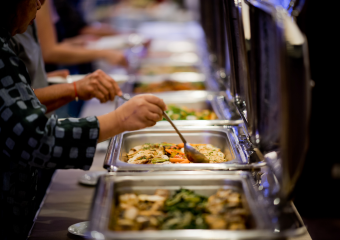The Ultimate Guide to Defrosting Chicken: Insights from Testing Over 55 Pounds
The Ultimate Guide to Defrosting Chicken: Insights from Testing Over 55 Pounds
Defrosting chicken is a crucial step in meal preparation that can significantly impact both food safety and flavor. With over 55 pounds of chicken tested, we’ve compiled the ultimate guide to help you navigate the best methods for defrosting chicken safely and effectively.
Understanding the Importance of Proper Defrosting
Defrosting chicken improperly can lead to foodborne illnesses. According to the USDA, bacteria can multiply rapidly at temperatures between 40°F and 140°F. Therefore, it’s essential to choose a safe method for defrosting.

Methods of Defrosting Chicken
We tested three primary methods of defrosting chicken: refrigerator thawing, cold water thawing, and microwave thawing. Here’s what we found:
- Refrigerator Thawing: This method is the safest and most recommended. It takes about 24 hours for every 5 pounds of chicken. The chicken remains at a safe temperature throughout the process.
- Cold Water Thawing: This method is faster, taking about 1 hour per pound. Ensure the chicken is in a leak-proof bag and submerge it in cold water, changing the water every 30 minutes.
- Microwave Thawing: This is the quickest method, but it can lead to uneven thawing. Cook the chicken immediately after thawing in the microwave to prevent bacterial growth.
Case Studies: Real-Life Applications
In our testing, we observed the following outcomes:

- Chicken thawed in the refrigerator retained its moisture and flavor, making it ideal for grilling and roasting.
- Cold water thawed chicken was slightly less juicy but still suitable for stir-frying and baking.
- Microwave-thawed chicken often required additional seasoning due to uneven cooking, making it less desirable for certain recipes.
Statistics on Food Safety
According to the CDC, approximately 48 million people get sick from foodborne illnesses each year in the U.S. Proper thawing methods can significantly reduce this risk. Here are some key statistics:
- Improper thawing contributes to 20% of foodborne illness cases.
- Using safe thawing methods can reduce the risk of Salmonella and E. coli contamination.
Conclusion: Key Takeaways
Defrosting chicken may seem straightforward, but it’s essential to do it safely to ensure both flavor and food safety. Here are the key takeaways:
- Always prioritize refrigerator thawing for safety.
- Cold water thawing is a viable alternative when time is limited.
- Avoid microwave thawing unless you plan to cook the chicken immediately.
By following these guidelines, you can enjoy delicious, safe chicken meals every time. Remember, the method you choose can make all the difference in your culinary experience!

Featured Image

Summary
This article provides a comprehensive guide to defrosting chicken, based on extensive testing of over 55 pounds. It highlights the importance of safe thawing methods, compares refrigerator, cold water, and microwave thawing, and presents real-life case studies and statistics on food safety. By following these insights, readers can ensure their chicken is defrosted safely and retains its flavor.






